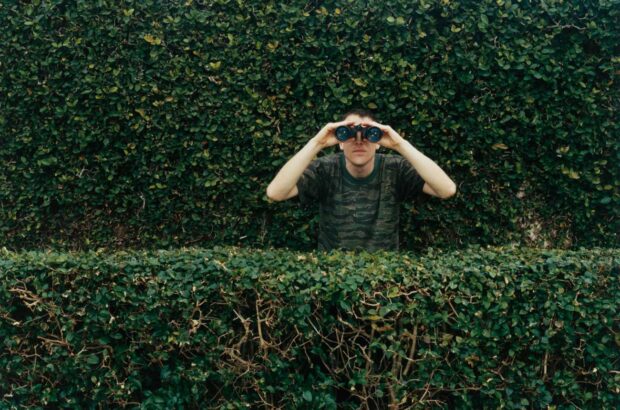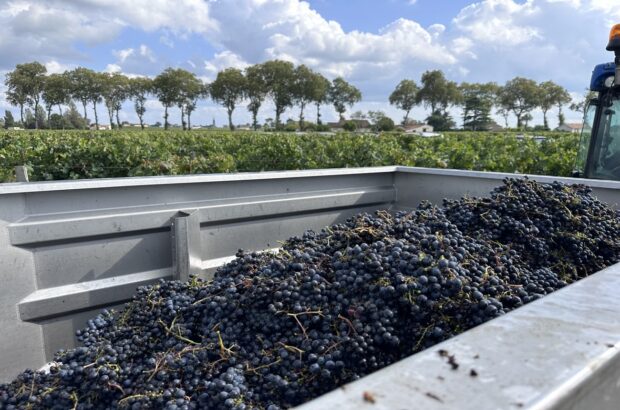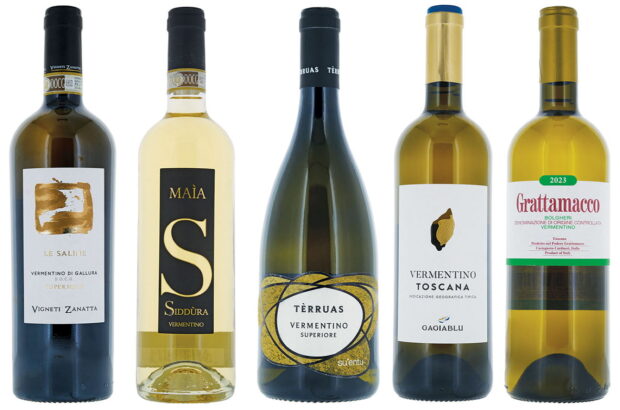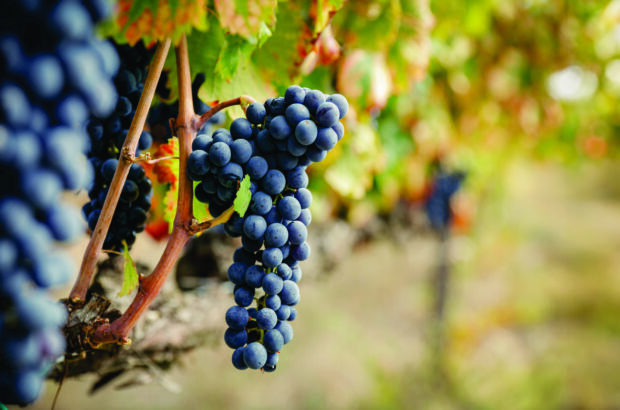There’s no doubt that the best Riojas improve with cellaring. The idea behind this spotlight tasting, therefore, was to see how these wines were performing after 10 and 20 years. However, the comparison can’t be based on age alone: the vintage factor is crucial.
In this instance, the differences between the 2004 and 2014 vintages are striking. While 2004 is considered to be one of the greatest Rioja vintages of this century to date, some producers would rather forget 2014 altogether.
As Pablo Franco, technical director of the Consejo Regulador DOCa Rioja, diplomatically puts it: ‘2014 was a heterogeneous vintage, but hard work in the vineyards paid off spectacularly.’
Scroll down to see notes and scores for some selected wines from the two vintages
{"content":"PC9wPgo8aDI+QSBwZXJmZWN0IHNlYXNvbjwvaDI+CjxwPkV2ZXJ5dGhpbmcgdGhhdCBjb3VsZCBnbyB3ZWxsIHdlbnQgd2VsbCBpbiAyMDA0LCBhbHRob3VnaCB0aGUgc2Vhc29uIGdvdCBvZmYgdG8gYSBnbG9vbXkgc3RhcnQsIHdpdGggbG90cyBvZiByYWluIGFuZCBmZWFyIG9mIGRpc2Vhc2UgaW4gdGhlIHZpbmV5YXJkcy4gVGhpcyB3YXMgZm9sbG93ZWQgYnkgcGVyZmVjdGx5IHN1bm55IHdlYXRoZXIgYW5kIHdlbGwtbm91cmlzaGVkIHNvaWxzLCB0aG91Z2ggdGVtcGVyYXR1cmVzIHdlcmUsIGF0IHRoZSB0aW1lLCBkZWVtZWQgYSBiaXQgaGlnaCAoaW4gbGlnaHQgb2YgY2xpbWF0ZSBjaGFuZ2UsIDIwMDQgdGVtcGVyYXR1cmVzIHdvdWxkIGxhdGVyIGNvbWUgdG8gYmUgc2VlbiBhcyDigJhhdmVyYWdl4oCZKS4gR3JhcGVzIHdlcmUgaGVhbHRoeSBhbmQgcmlwZSwgYW5kIHlvdW5nIHdpbmVzIHdlcmUgZGVsaWNpb3VzOiBiYWxhbmNlZCBhbmQgZnJ1aXR5LCB3aXRoIHJvdW5kIHRhbm5pbnMgYW5kIHJlbGF0aXZlbHkgbG93IHBIIOKAkyBhbGwgdGhlIG5lY2Vzc2FyeSBjb25kaXRpb25zIGZvciBhZ2VpbmcuPC9wPgo8cD48ZGl2IGNsYXNzPSJhZC1jb250YWluZXIgYWQtY29udGFpbmVyLS1tb2JpbGUiPjxkaXYgaWQ9InBvc3QtaW5saW5lLTIiIGNsYXNzPSJpcGMtYWR2ZXJ0Ij48L2Rpdj48L2Rpdj48L3A+CjxwPkFzIGEgcmVzdWx0LCB0aGUgMjAwNCB2aW50YWdlIHdhcyBnZW5lcmFsbHkgdmlld2VkIGFzIOKAmGV4Y2VsbGVudOKAmSBieSB0aGUgZXhwZXJ0cy4gVGhpcyByYXRpbmcgYXBwbGllZCBhY3Jvc3MgdGhlIHRocmVlIHN1Yi1yZWdpb25zLCBhbHRob3VnaCBSaW9qYSBBbGF2ZXNhIGluIHBhcnRpY3VsYXIgYmVuZWZpdGVkIGZyb20gdGhlIGNvbmRpdGlvbnMgYW5kIGFyZ3VhYmx5IFJpb2phIE9yaWVudGFsIGxlc3Mgc28sIGJlY2F1c2UgdGVtcGVyYXR1cmVzIHRoZXJlIHdlcmUgcGFydGljdWxhcmx5IGhpZ2guPC9wPgo8cD5JdOKAmXMgYWxzbyB3b3J0aCBub3RpbmcgdGhhdCBhdCB0aGUgdGltZSB0aGVyZSB3ZXJlIGZld2VyIHF1YWxpdHktbWluZGVkIHdpbmVyaWVzIGluIFJpb2phIE9yaWVudGFsLCBidXQgdGhlIHNpdHVhdGlvbiBpcyBkaWZmZXJlbnQgdG9kYXkuPC9wPgo8aDI+QSBzZWFzb24gdG8gZm9yZ2V0PC9oMj4KPHA+SnVtcCBmb3J3YXJkIDEwIHllYXJzIGFuZCAyMDE0IHdhcyB0aGUgb3Bwb3NpdGUgb2YgMjAwNC4gSXQgc3RhcnRlZCB3ZWxsLCBhZnRlciB0aGUgcmFpbnkgYW5kIGNvbGQgMjAxMyAodGhlIGxhc3Qgc3VjaCB2aW50YWdlIGluIFJpb2phIHRvIGRhdGUpLCB3aXRoIHBsZW50eSBvZiB3YXRlciBpbiB0aGUgc29pbHMgYW5kIGdvb2Qgd2VhdGhlci48L3A+CjxkaXYgY2xhc3M9ImFkLWNvbnRhaW5lciBhZC1jb250YWluZXItLW1vYmlsZSI+PGRpdiBpZD0icG9zdC1pbmxpbmUtMyIgY2xhc3M9ImlwYy1hZHZlcnQiPjwvZGl2PjwvZGl2Pgo8cD5CdXQgdGhlbiB0aGUgc2Vhc29uIHdvcnNlbmVkIGNvbnNpZGVyYWJseSBhY3Jvc3MgdGhlIHdob2xlIHJlZ2lvbiwgd2l0aCBzb21lIGFyZWFzIGJlaW5nIGhpdCBwYXJ0aWN1bGFybHkgaGFyZC4gQ29uZGl0aW9ucyB3ZXJlIHRlcnJpYmxlIGluIG1hbnkgdmluZXlhcmRzLCBlc3BlY2lhbGx5IGF0IGhhcnZlc3QgdGltZSwgd2hlbiB0aGUgaGlnaCByYWluZmFsbCBsZWQgdG8gYm90cnl0aXMuPC9wPgo8cD5UaG9zZSBncm93ZXJzIHdobyBtYW5hZ2VkIG9sZCB2aW5lcyB1bmRlcnRvb2sgZ3JlZW4gaGFydmVzdGluZywgY2xlYXJpbmcgYW5kIHdvcmtpbmcgdGhlIHZpbmV5YXJkcyBpbiBhIHRpbWVseSB3YXkgc28gdGhhdCB0aGV5IHdlcmUgcmVhZHkgdG8gcGljayBhdCB0aGUgcmlnaHQgdGltZSBhbmQgY291bGQgZ2V0IGhlYWx0aHkgYW5kIHJpcGUgZ3JhcGVzLjwvcD4KPGRpdiBjbGFzcz0iYWQtY29udGFpbmVyIGFkLWNvbnRhaW5lci0tbW9iaWxlIj48ZGl2IGlkPSJwb3N0LWlubGluZS00IiBjbGFzcz0iaXBjLWFkdmVydCI+PC9kaXY+PC9kaXY+CjxwPlVuZm9ydHVuYXRlbHksIHRob3NlIHByb2R1Y2VycyB3aXRoIHBhcnRpY3VsYXJseSBoaWdoIHlpZWxkcyBhbmQgbGVzcy1jYXJlZnVsIHZpdGljdWx0dXJlIHByYWN0aWNlcyBzdWZmZXJlZCBhIGxvdCwgYW5kIHN1YnNlcXVlbnRseSBoYWQgdG8gbWFrZSBhIG51bWJlciBvZiBjb3JyZWN0aW9ucyBpbiB0aGUgd2luZXJ5LjwvcD4KPGgyPldpbmVtYWtpbmcgc2hpZnRzPC9oMj4KPHA+U2lnbmlmaWNhbnRseSwgMjAxNCBhbHNvIG1hcmtzIGEgc2hpZnQgaW4gYXR0aXR1ZGVzIHRvd2FyZHMgd2luZW1ha2luZyBpbiBSaW9qYTogMjAxNCB3YXMgdGhlIGxhc3QgdmludGFnZSBmb3Igb3ZlcnJpcGUgd2luZXMuIFNpbmNlIHRoZW4sIHdpbmVtYWtlcnMgbm8gbG9uZ2VyIGJvYXN0IHRoYXQgdGhleSBhcmUg4oCYdGhlIGxhc3QgdG8gaGFydmVzdOKAmSwgYXMgdGhleSBoYWQgZG9uZSBwcmV2aW91c2x5LjwvcD4KPGRpdiBjbGFzcz0iYWQtY29udGFpbmVyIGFkLWNvbnRhaW5lci0tbW9iaWxlIj48ZGl2IGlkPSJwb3N0LWlubGluZS01IiBjbGFzcz0iaXBjLWFkdmVydCI+PC9kaXY+PC9kaXY+CjxwPldoaWxlIHRoZSBzd2l0Y2ggdG8gaGFydmVzdGluZyBlYXJsaWVyIGhhcyBtdWNoIHRvIGRvIHdpdGggY2xpbWF0ZSBjaGFuZ2UsIGFzIHdlbGwgYXMgYSBxdWVzdCBmb3IgZmluZXNzZSwgdGhlIGxhdGUgcmFpbnMgdGhhdCBvY2N1cnJlZCBpbiAyMDE0IHdlcmUgZGVmaW5pdGVseSBhIGNhdGFseXN0IGZvciB0aGlzIGNoYW5nZS48L3A+CjxwPkRlc3BpdGUgdGhlIGNoYWxsZW5nZXMsIHRoZXJlIHdlcmUsIGhvd2V2ZXIsIGEgZGVjZW50IG51bWJlciBvZiB2ZXJ5IGdvb2QgMjAxNCB3aW5lcyBwcm9kdWNlZCBhdCB0aGUgdGltZSBvZiByZWxlYXNlLCBhbmQgdGhlcmUgd2FzIG5vIHJlYXNvbiB0byBkaXNjYXJkIHRoZSB3aG9sZSB2aW50YWdlLiBJbmRlZWQsIEkgcmVtZW1iZXIgc29tZSB3aW5lcyBhY2hpZXZlZCBleGNlbGxlbnQgc2NvcmVzIGJhY2sgdGhlbi48L3A+CjxwPkl0IHdhcyB0aGVyZWZvcmUgYSB1c2VmdWwgdmludGFnZSBpbiBhdCBsZWFzdCBvbmUgcmVzcGVjdDogaXQgaGlnaGxpZ2h0ZWQgdGhlIGRpZmZlcmVuY2VzIGJldHdlZW4gdGhlIGJlc3QgcHJvZHVjZXJzIGFuZCB0aGUgb3RoZXJzLjwvcD4KPGgyPkNvbXBhcmUgYW5kIGNvbnRyYXN0PC9oMj4KPHA+V2l0aCBhbGwgdGhpcyBpbiBtaW5kLCB5b3UgbWlnaHQgZXhwZWN0IHRoZSAyMDE0cyB0byBhcHBlYXIgc2xpZ2h0bHkgeW91bmdlciB0aGFuIHRoZSAyMDA0cywgd2hpbGUgdGhlIDIwMDRzIHdvdWxkIGJlIHNsaWdodGx5IG1vcmUgY29tcGxleC4gSG93ZXZlciwgdGhlIHJlc3VsdHMgb2Ygb3VyIHRhc3Rpbmcgc2hvd2VkIHRoYXQgdGhpcyB3YXMgbm90IHRoZSBjYXNlLjwvcD4KPHA+T3ZlciB0aGUgeWVhcnMsIHRoZSBkaWZmZXJlbmNlcyBpbiBxdWFsaXR5IHBvdGVudGlhbCBiZWNvbWUgbW9yZSBhbmQgbW9yZSBldmlkZW50LiBCYXNlZCBvbiB0aGUgcmVzdWx0cyBvZiB0aGlzIHRhc3RpbmcgSSB3b3VsZCByZWNvbW1lbmQga2VlcGluZyB0b3AgMjAwNHMgZm9yIGxvbmdlciB0aGFuIDIwMTRzIOKAkyBhbHRob3VnaCB0aGUgYmVzdCBvZiB0aGVtLCBhY3Jvc3MgYm90aCB2aW50YWdlcywgYXJlIGhpZ2hseSBlbmpveWFibGUgbm93LjwvcD4KPHA+SW4gbXkgb3BpbmlvbiwgMjAwNCBpcyBsaWtlbHkgdG8gZW50ZXIgdGhlIGNsdWIgb2YgdG9wIFJpb2phIHZpbnRhZ2VzLCBhbG9uZ3NpZGUgeWVhcnMgc3VjaCBhcyAyMDAxLCAxOTY0LCAxOTI5IGFuZCAxODk1LiBJbiB0aGF0IGNvbnRleHQsIGFsb25nc2lkZSB0aGVzZSBncmVhdHMsIDIwMTQgaXMgYm91bmQgdG8gYmUgZm9yZ290dGVuLjwvcD4KPHA+V2luZSBsb3ZlcnMgYXJlIHdlbGwgYXdhcmUgb2YgdmludGFnZSBkaWZmZXJlbmNlcyBmb3IgQm9yZGVhdXggYW5kIEJ1cmd1bmR5LCBidXQgdGVuZCB0byBtaW5pbWlzZSB0aGUgdmludGFnZSBlZmZlY3QgaW4gUmlvamEuIFRoaXMgdGFzdGluZyBwcm92ZWQgdGhhdCB0aGlzIG5vdGlvbiBpcyBjb21wbGV0ZWx5IHdyb25nIOKAkyBwYXJ0aWN1bGFybHkgZm9yIHdpbmVzIHdob3NlIHBlYWsgaXMgb2Z0ZW4gc29tZSBkZWNhZGVzIGFoZWFkLjwvcD4KPHA+SW5kZWVkLCB0aGUgcnVsZSBvZiDigJhidXkgdGhlIGdyZWF0ZXN0IGluIHBvb3IgdmludGFnZXMsIGJ1eSB0aGUgc2Vjb25kIGdyZWF0ZXN0IGluIHRoZSBiZXN0IHZpbnRhZ2Vz4oCZIGFwcGxpZXMgdG8gUmlvamEgYXMgbXVjaCBhcyBpdCBkb2VzIHRvIHRoZSBGcmVuY2ggcmVnaW9ucy48L3A+CjxoMj5Ib3cgdGhlIHRhc3Rpbmcgd29ya2VkPC9oMj4KPGRpdiBjbGFzcz0iaW5qZWN0aW9uIj48L2Rpdj4KPHA+VGhlIHRhc3Rpbmcgd2FzIGNvbmR1Y3RlZCBibGluZC4gRWFjaCBwcm9kdWNlciBzdWJtaXR0ZWQgc2FtcGxlcyBmcm9tIGJvdGggMjAwNCBhbmQgMjAxNCwgb24gdGhlIHVuZGVyc3RhbmRpbmcgdGhhdCBvbmx5IG9uZSB0YXN0aW5nIG5vdGUgcGVyIHByb2R1Y2VyIHdvdWxkIGJlIHB1Ymxpc2hlZC4gU2V2ZXJhbCBwcm9kdWNlcnMgaGFkIGV4Y2VsbGVudCB3aW5lcyBpbiBib3RoIHZpbnRhZ2VzOyBwcmFjdGljYWxseSBhbGwgb2YgdGhlbSBoYWQgYSBiZXR0ZXIgd2luZSBpbiAyMDA0IHRoYW4gaW4gMjAxNC48L3A+CjxwPkFzIGEgcmVzdWx0LCB0aGUgcmVjb21tZW5kYXRpb25zIGdpdmUgcHJpb3JpdHkgdG8gdGhlIGJlc3QgMjAxNHMgZnJvbSBhIGJyb2FkIHJhbmdlIG9mIHByb2R1Y2Vycy4gVGhlIDIwMDRzIHJlY29tbWVuZGVkIGFyZSB0aGUgYmVzdCBhbW9uZyB0aG9zZSBub3Qgc2VsZWN0ZWQgZm9yIHRoZWlyIDIwMTRzLiBOb3RlIHRoYXQgYWxsIHByb2R1Y2VycyAoZXhjZXB0IG9uZSwgQ2FybG9zIFNlcnJvcykgd2hvc2UgMjAxNCB3aW5lcyB3ZSBzZWxlY3RlZCBnb3QgYSBoaWdoZXIgbWFyayBmb3IgdGhlaXIgMjAwNHMuPC9wPgo8cD4K"}
Maturing well: vintage highlights from our tasting:
{}
{"wineId":"83319","displayCase":"standard","paywall":true}
{"wineId":"83329","displayCase":"standard","paywall":true}
{"wineId":"83330","displayCase":"standard","paywall":true}
{"wineId":"83331","displayCase":"standard","paywall":true}
{"wineId":"83332","displayCase":"standard","paywall":true}
{"wineId":"83333","displayCase":"standard","paywall":true}
{"wineId":"83320","displayCase":"standard","paywall":true}
{"wineId":"83321","displayCase":"standard","paywall":true}
{"wineId":"83322","displayCase":"standard","paywall":true}
{"wineId":"83334","displayCase":"standard","paywall":true}
{"wineId":"83323","displayCase":"standard","paywall":true}
{"wineId":"83324","displayCase":"standard","paywall":true}
{"wineId":"83325","displayCase":"standard","paywall":true}
{"wineId":"83336","displayCase":"standard","paywall":true}
{"wineId":"83335","displayCase":"standard","paywall":true}
{"wineId":"83337","displayCase":"standard","paywall":true}
{"wineId":"83326","displayCase":"standard","paywall":true}
{"wineId":"83327","displayCase":"standard","paywall":true}
{"wineId":"83338","displayCase":"standard","paywall":true}
{"wineId":"83328","displayCase":"standard","paywall":true}
{}
Related articles












